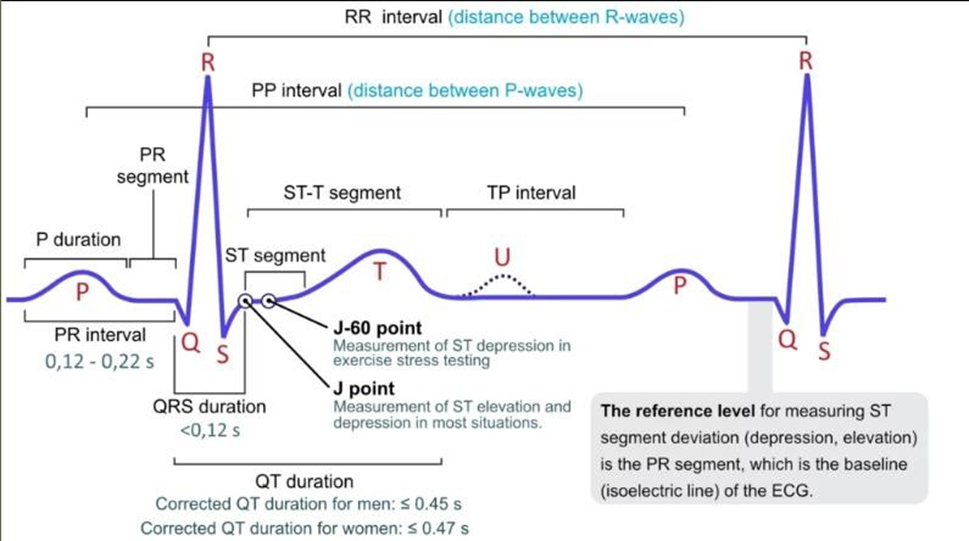A nurse is caring for a client who has an elevated potassium level and is on a cardiac monitor.
The nurse is aware that hyperkalemia may be associated with changes to the T-wave. On the graphic, point and click on the area of the electrocardiogram (ECG) that represents the T-wave. (Selectable areas, or "Hot Spots," can be found by moving your cursor over the artwork until the cursor changes appearance, usually into a hand. Click only on the Hot Spot that corresponds to your answer.)
The Correct Answer is "{\"xRanges\":[104.2578125,134.2578125],\"yRanges\":[114.30078125,144.30078125]}"

Nursing Test Bank
Naxlex Comprehensive Predictor Exams
Related Questions
Correct Answer is C
Explanation
A. Reports of joint pain: Joint pain is more indicative of musculoskeletal issues rather than chronic renal disease. While joint pain can occur in some types of kidney disease, progressive edema is a more specific symptom.
B. Increase in appetite: An increase in appetite is not typically associated with chronic renal disease. Instead, clients with kidney disease may experience a decrease in appetite due to various factors such as nausea, vomiting, and changes in taste.
C. Progressive edema: Progressive edema, especially in the lower extremities and around the eyes (periorbital edema), can be a significant indicator of declining kidney function. It results from fluid retention due to impaired kidney filtration.
D. Recent increase in thirst: While increased thirst can be a symptom of chronic renal disease, it is not as specific as progressive edema. Increased thirst may occur due to other conditions or factors such as diabetes mellitus or dehydration.
Correct Answer is D
Explanation
A. The client expresses feelings of frustration and difficulty coping with the chronic nature of RA: This indicates the client is struggling emotionally, which is common in chronic illnesses but does not directly reflect the effectiveness of the RA treatment regimen.
B. The client's C-reactive protein (CRP) levels have remained stable since the initiation of treatment: While stable CRP levels can indicate control of inflammation, they do not show improvement. Ideally, effective treatment would reduce CRP levels.
C. The client demonstrates improved range of motion in the affected joints during physical therapy sessions: Improved range of motion is a positive outcome, but it may not fully represent the overall effectiveness of the RA treatment, as joint damage can still progress.
D. The client's radiographic images show no progression of joint erosion compared to images from six months ago: This is the best indicator of effective RA management as it directly shows that the treatment is preventing further joint damage, which is a primary goal in managing RA.
Whether you are a student looking to ace your exams or a practicing nurse seeking to enhance your expertise , our nursing education contents will empower you with the confidence and competence to make a difference in the lives of patients and become a respected leader in the healthcare field.
Visit Naxlex, invest in your future and unlock endless possibilities with our unparalleled nursing education contents today
Report Wrong Answer on the Current Question
Do you disagree with the answer? If yes, what is your expected answer? Explain.
Kindly be descriptive with the issue you are facing.
